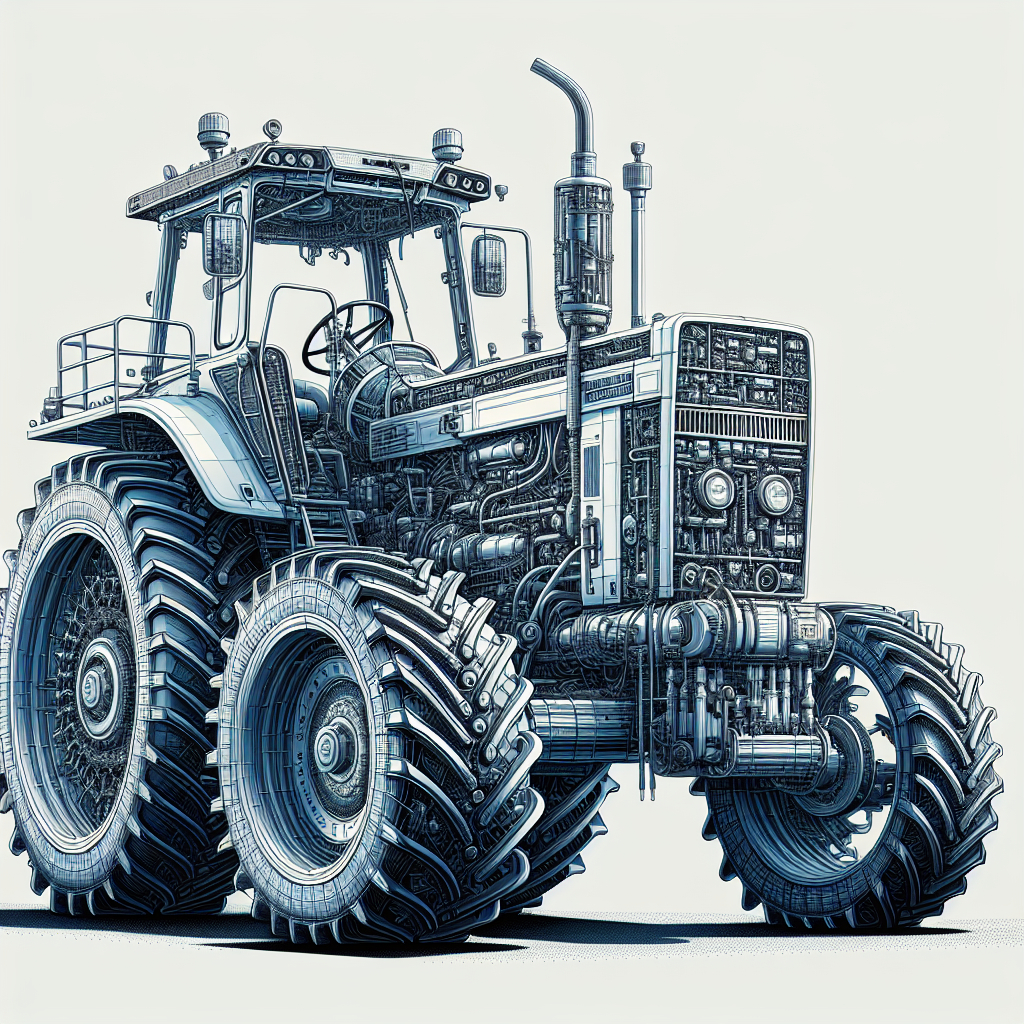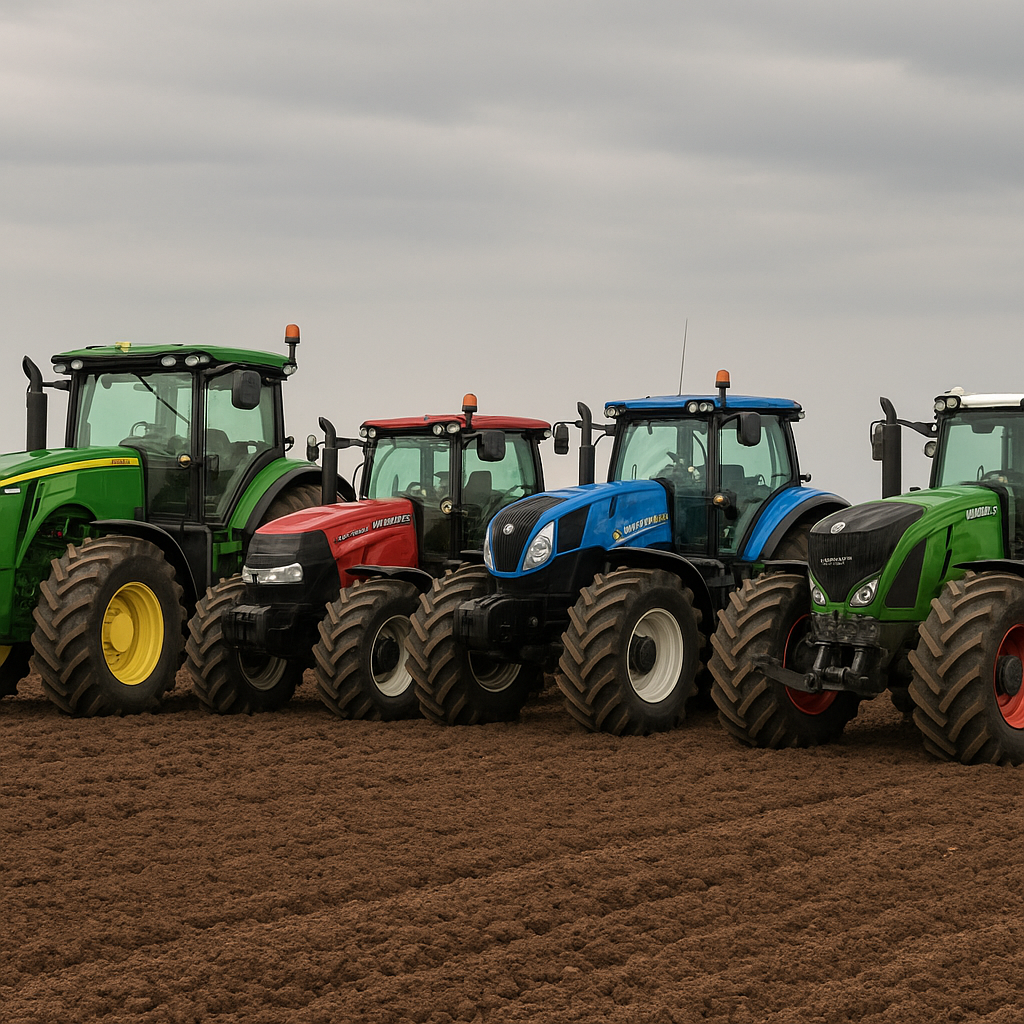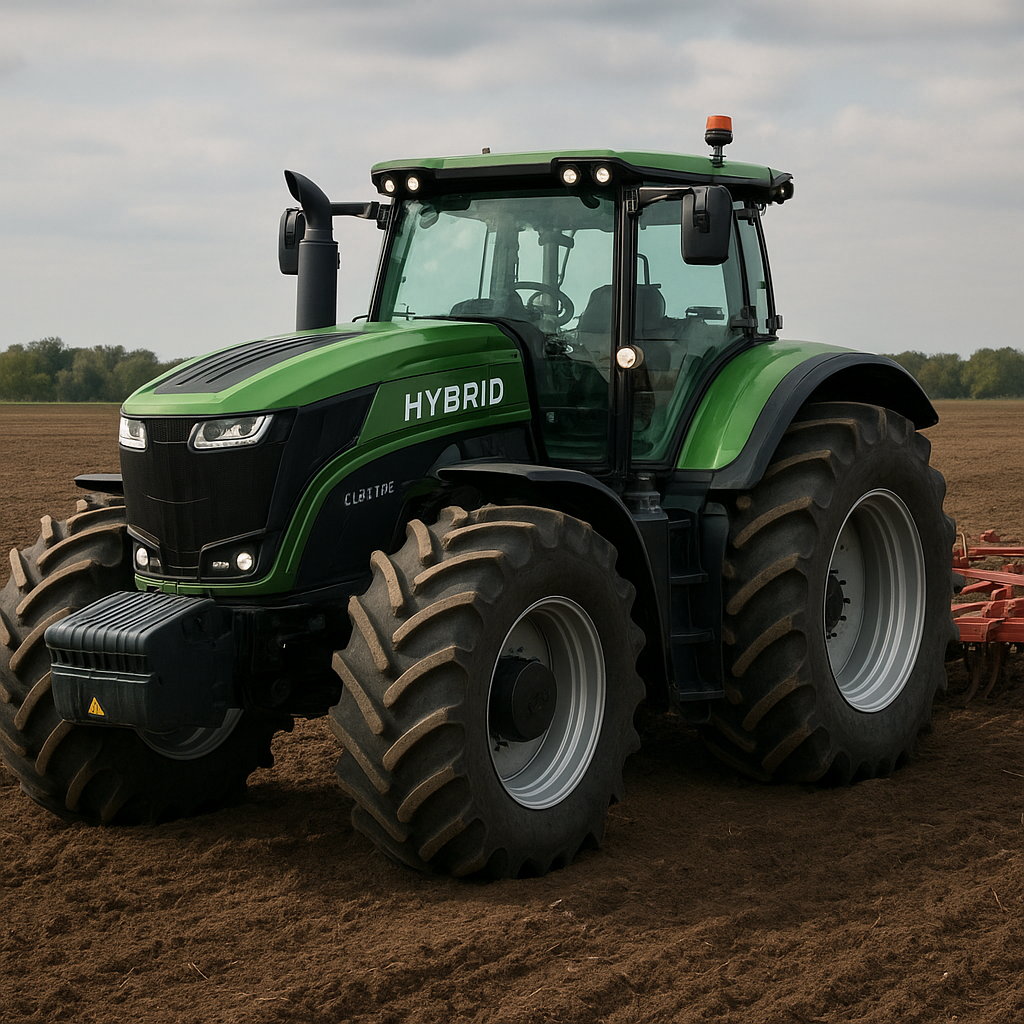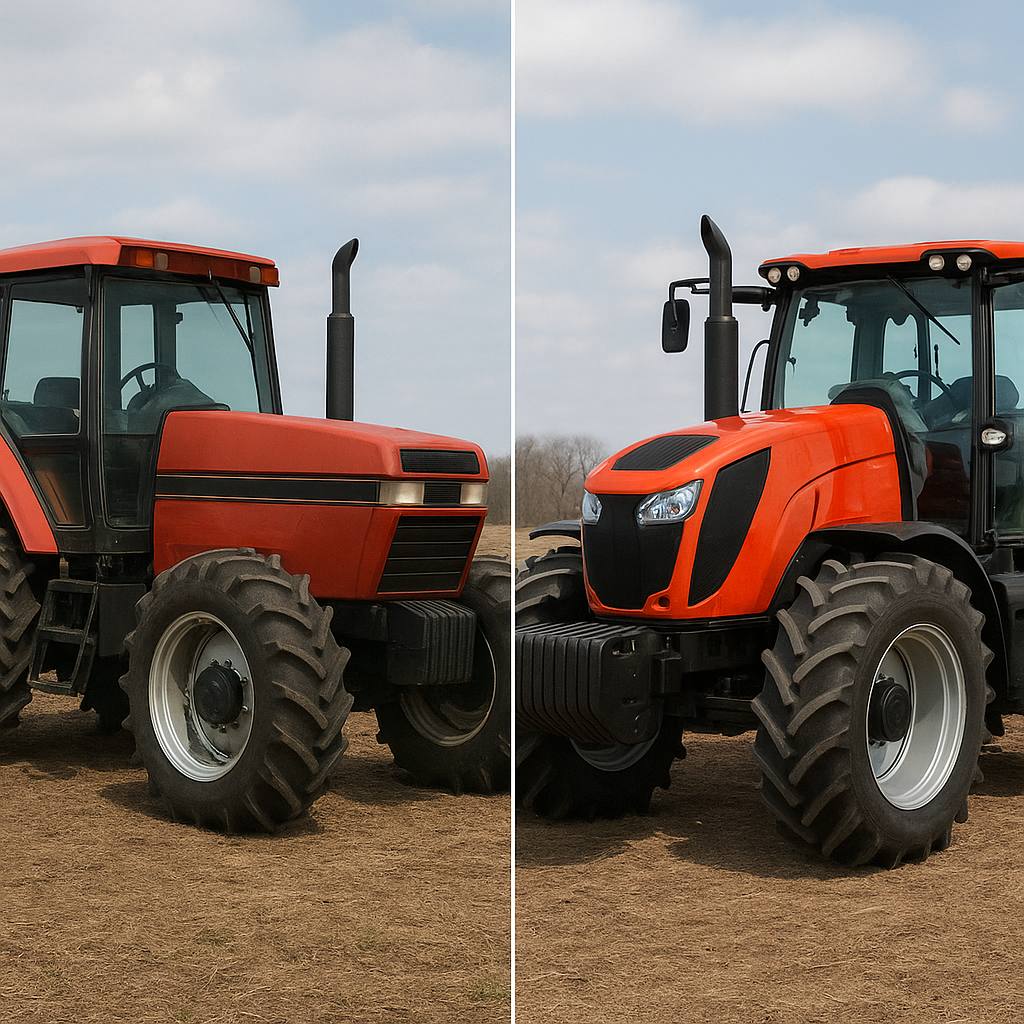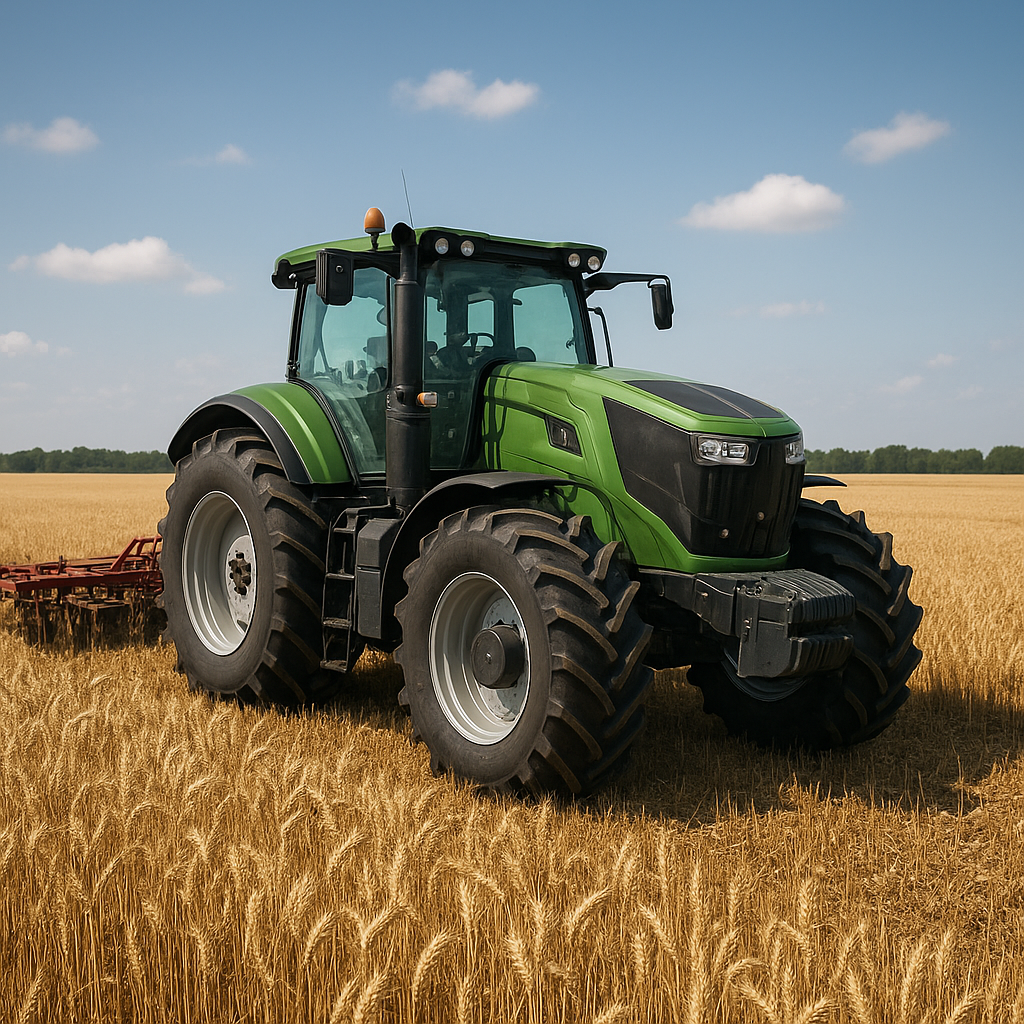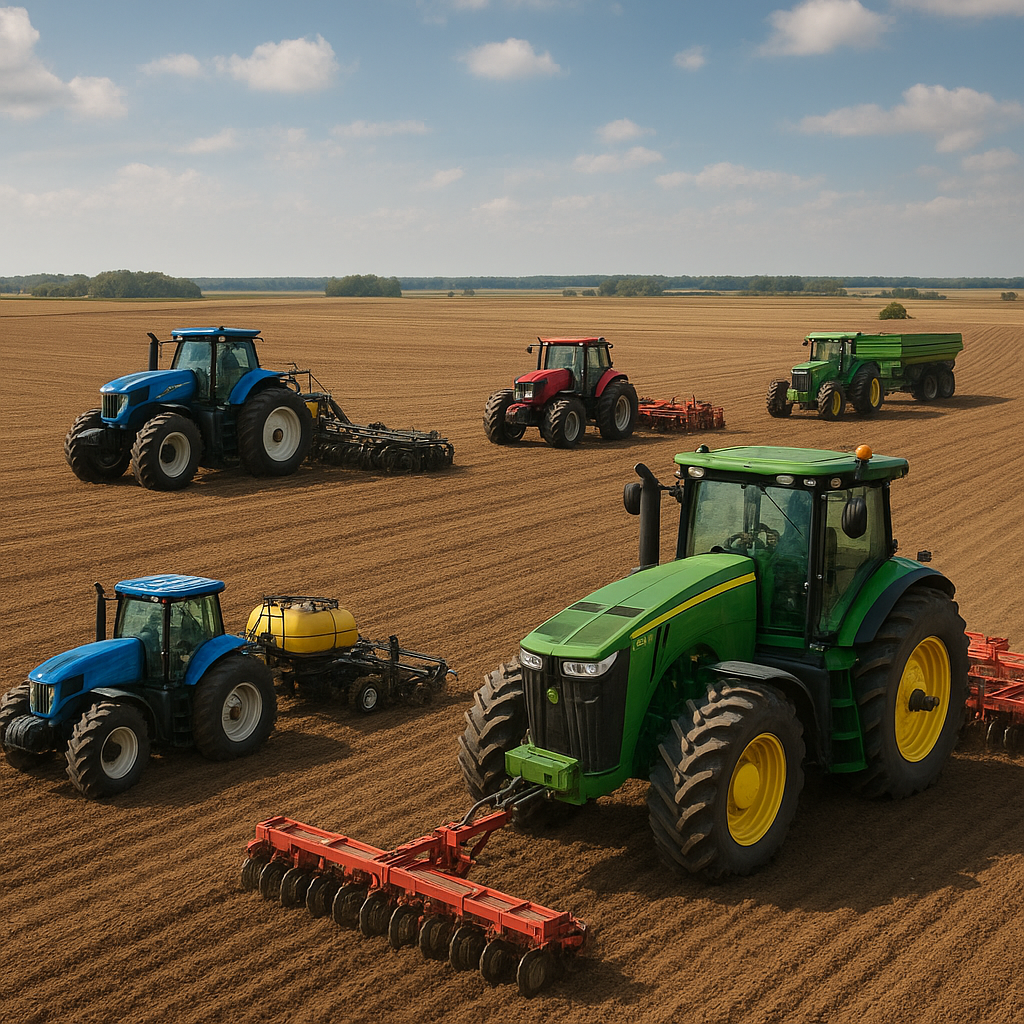Challenger Tractors have long been synonymous with power, durability, and innovation in the agricultural industry. This article delves into the history and evolution of this powerhouse brand, exploring its origins, technological advancements, and the impact it has had on modern farming.
Origins and Early Development
The story of Challenger Tractors begins in the early 1980s when Caterpillar Inc., a company renowned for its heavy machinery, decided to venture into the agricultural sector. Recognizing the need for more powerful and efficient farming equipment, Caterpillar introduced the first Challenger tractor in 1986. This initial model, the Challenger 65, was a game-changer, featuring a rubber-tracked undercarriage that provided superior traction and reduced soil compaction compared to traditional wheeled tractors.
The Challenger 65 quickly gained popularity among farmers, thanks to its innovative design and robust performance. The success of this model paved the way for the development of subsequent models, each incorporating new technologies and improvements to meet the evolving needs of the agricultural industry.
Technological Advancements and Innovations
One of the key factors that set Challenger Tractors apart from their competitors is their commitment to technological innovation. Over the years, the brand has introduced several groundbreaking features that have revolutionized the way farmers work.
Rubber-Tracked Undercarriage
The introduction of the rubber-tracked undercarriage in the Challenger 65 was a significant milestone in the history of agricultural machinery. This design provided better traction and stability, allowing farmers to work more efficiently in various soil conditions. The reduced soil compaction also helped improve crop yields, making the Challenger tractors a preferred choice for many farmers.
Advanced Engine Technology
Challenger Tractors have always been at the forefront of engine technology. The brand has consistently incorporated powerful and fuel-efficient engines into their models, ensuring optimal performance and reduced operating costs. The use of advanced engine management systems has also allowed for better control and monitoring of the tractor’s performance, further enhancing its efficiency and reliability.
Precision Farming Solutions
In recent years, Challenger Tractors have embraced the concept of precision farming, integrating advanced technologies such as GPS, telematics, and data analytics into their machinery. These innovations enable farmers to make more informed decisions, optimize their operations, and increase productivity. Features like auto-steering, variable rate application, and real-time monitoring have become standard in many Challenger models, helping farmers achieve greater accuracy and efficiency in their work.
Impact on Modern Farming
The introduction and continuous evolution of Challenger Tractors have had a profound impact on modern farming practices. The brand’s commitment to innovation and quality has helped farmers overcome various challenges and improve their overall productivity.
Increased Efficiency and Productivity
Challenger Tractors have significantly increased the efficiency and productivity of farming operations. The advanced technologies and features incorporated into these machines allow farmers to complete tasks more quickly and accurately, reducing the time and effort required for various agricultural activities. This increased efficiency translates to higher crop yields and better profitability for farmers.
Environmental Benefits
The innovative design and technology of Challenger Tractors also contribute to environmental sustainability. The rubber-tracked undercarriage reduces soil compaction, promoting healthier soil and better crop growth. Additionally, the fuel-efficient engines and precision farming solutions help minimize the environmental impact of farming operations, reducing greenhouse gas emissions and conserving natural resources.
Enhanced Operator Comfort and Safety
Challenger Tractors are designed with the operator’s comfort and safety in mind. The spacious and ergonomic cabs provide a comfortable working environment, while advanced features like climate control, adjustable seats, and intuitive controls enhance the overall user experience. Safety features such as rollover protection systems (ROPS) and advanced braking systems ensure that operators can work confidently and safely in various conditions.
Future Prospects and Innovations
As the agricultural industry continues to evolve, Challenger Tractors remain committed to pushing the boundaries of innovation and technology. The brand is constantly exploring new ways to enhance the performance, efficiency, and sustainability of their machinery, ensuring that they continue to meet the needs of modern farmers.
Electric and Hybrid Models
One of the most exciting prospects for the future of Challenger Tractors is the development of electric and hybrid models. As the world moves towards more sustainable energy sources, the agricultural industry is also embracing this trend. Electric and hybrid tractors offer the potential for reduced emissions, lower operating costs, and quieter operation, making them an attractive option for environmentally conscious farmers.
Autonomous Tractors
The concept of autonomous tractors is another area of interest for Challenger. The integration of advanced sensors, artificial intelligence, and machine learning technologies could enable tractors to operate independently, performing tasks with minimal human intervention. This innovation has the potential to revolutionize farming practices, increasing efficiency and reducing labor costs.
Enhanced Connectivity and Data Integration
As precision farming continues to gain traction, the importance of connectivity and data integration cannot be overstated. Challenger Tractors are likely to incorporate even more advanced telematics and data analytics solutions, allowing farmers to seamlessly connect their machinery with other farm management systems. This enhanced connectivity will enable better decision-making, improved resource management, and greater overall productivity.
Conclusion
Challenger Tractors have come a long way since their inception in the 1980s. The brand’s commitment to innovation, quality, and performance has made it a leader in the agricultural machinery industry. From the introduction of the rubber-tracked undercarriage to the integration of precision farming technologies, Challenger Tractors have consistently pushed the boundaries of what is possible in modern farming.
As the agricultural industry continues to face new challenges and opportunities, Challenger Tractors are well-positioned to lead the way with their cutting-edge innovations and unwavering dedication to meeting the needs of farmers. The future of farming looks bright with Challenger Tractors at the forefront, driving progress and helping farmers achieve greater efficiency, productivity, and sustainability.
